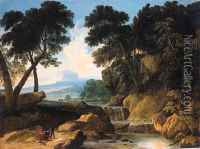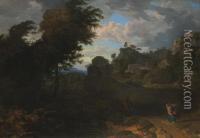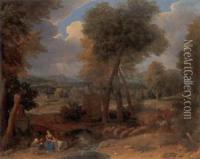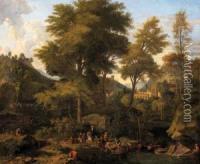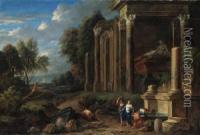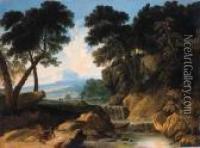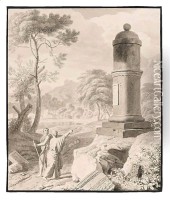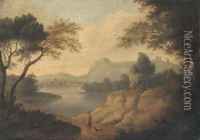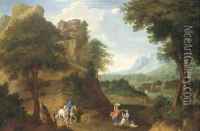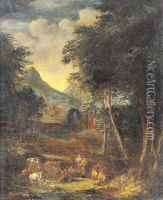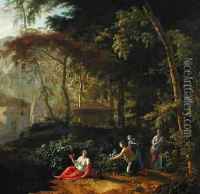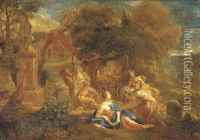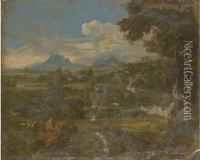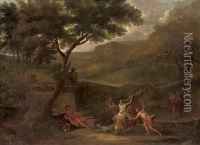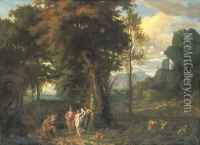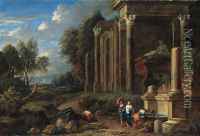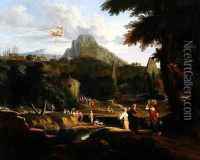Johannes (Polidoro) Glauber Paintings
Johannes Glauber, who was also known as Polidoro, was a Dutch Golden Age landscape painter born in Utrecht in 1646. He came from an artistic family; his father was the painter Jan Gotlieb Glauber, and his brothers, Jan and Diana Glauber, were also painters. Polidoro's nickname was derived from the Italian mannerist painter Polidoro da Caravaggio, whose style influenced the young Glauber.
Johannes Glauber is known for his Italianate landscapes, which were a popular genre in the 17th-century Dutch Republic. These landscapes typically featured classical ruins or pastoral scenes that were imbued with a warm, Mediterranean light, despite being created in the distinctly cooler and grayer climate of the Netherlands. Glauber's travels in France, Italy, and Germany had a significant impact on his art, as he absorbed various regional styles and influences.
After his travels, Glauber settled in Hamburg, Germany, where he worked for a considerable period. His paintings often included figures in the foreground, engaging in various activities, which helped to give scale and life to the expansive and idealized natural settings. His work was well-received, and he gained a reputation for the quality and beauty of his landscapes.
Glauber's paintings were collected by patrons across Europe, and his style had a lasting influence on the development of landscape painting in the region. Despite the popularity of his work during his lifetime, Johannes Glauber's name is less well-known today than some of his contemporaries. However, his contributions to the field of landscape painting and his role in the dissemination of Italianate styles to Northern Europe remain significant.
He passed away in 1726, leaving behind a body of work that continues to be appreciated by art historians and collectors for its technical skill and idyllic representation of natural beauty.
